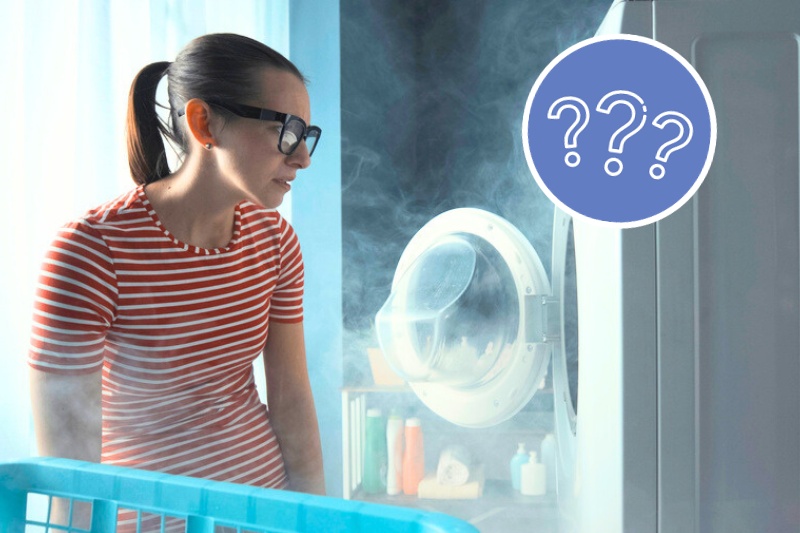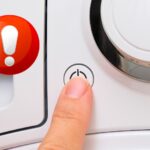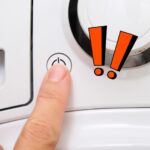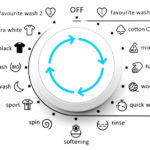The scent of freshly washed clothes is familiar and comforting for many. However, an unexpected burning smell from our washing machines can be a cause for concern.
Not only does it suggest an issue with your appliance, but it could pose a fire safety risk.
If you’re dealing with this issue, don’t panic. This guide explores the various causes that can lead to this unsettling scent and provides practical solutions to address the issue.
Causes of a Washing Machine Smelling Like Burning Rubber and Smoke
If your washing machine smells like burning, there could be a few possible reasons for this issue:
1. Broken drive belts
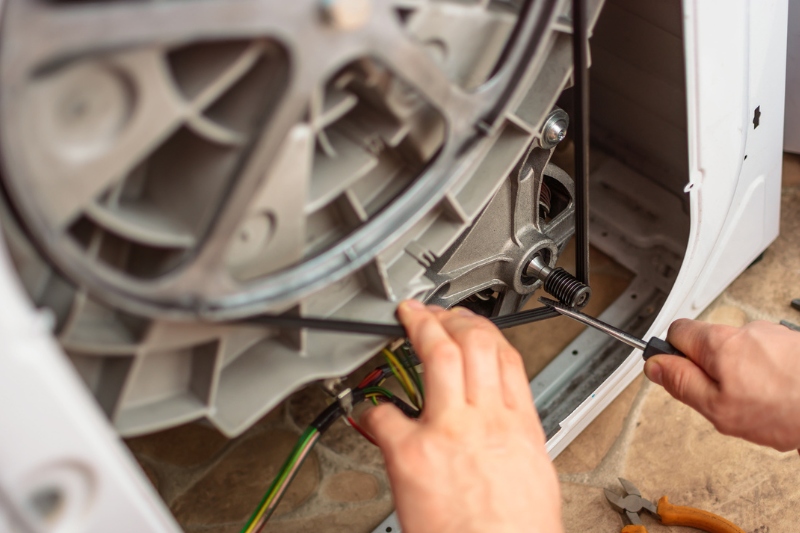
Some washing machines use a drive mechanism to spin the drum, made of a belt, pulley, and motor. The drive belt fits between the motor and the drum pulley, essentially taking the energy from the motor and using it to rotate the machine.
Although made from resilient materials, the drive belt in your washer may wear out or become misaligned over time with extended use.
A worn-out or misaligned belt can start to slip and generate a burning rubber smell as it rubs against the drum or other components.
A broken drive belt can also cause your washing machine to stop spinning, resulting in your laundry not being properly washed.
2. Belt tension issues
Even if the drive belt is intact, you might smell burning if the belt tension is incorrect. The drive belt should tightly grip the motor and the pulley to effectively spin the washing machine drum at the appropriate speed for your chosen wash cycle.
If the belt is too slack, it can lead to slipping and cause a burning smell as it rubs other components at speed.
3. Faulty drive motor pulleys
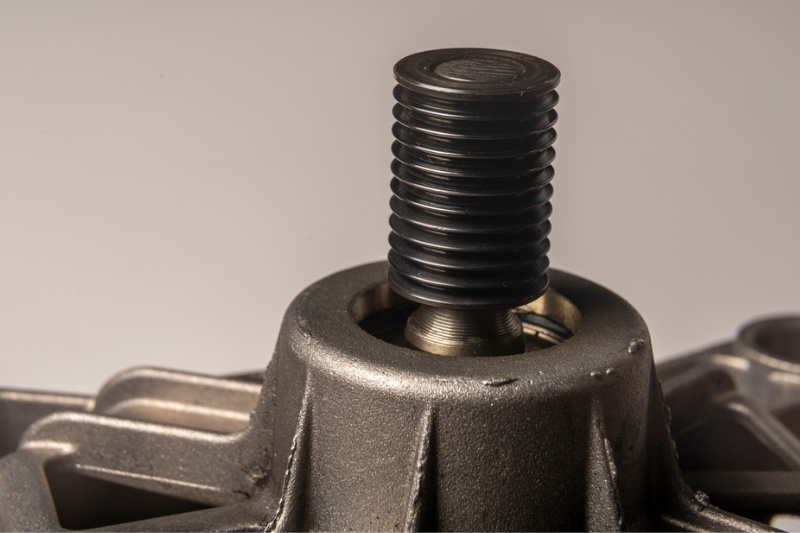
Rather than an issue with the rubber drive belt, burning smells from your washer could be caused by a faulty motor pulley.
Like drive belts, pulleys can wear out and may start to rust over time. Dirt, grease, or rubber compounds also sometimes accumulate inside the motor pulleys.
Dirty and damaged pulleys increase the amount of friction generated as the mechanical components inside your washer spin, which in turn creates heat.
The raised temperature overheats the rubber belt and the clogged dirt, causing a burning smell. You’ll likely also hear a squealing or thumping noise during draining or spinning.
4. Malfunctioning drive motor
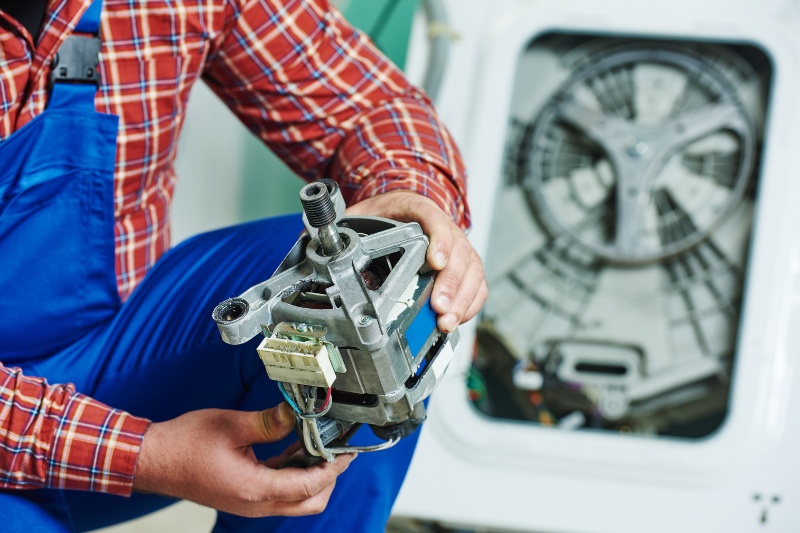
Burning smells from your washer might be caused by the motor overheating. The motor has bearings that allow it to rotate smoothly.
If these bearings become worn out or damaged, the motor might have to work harder to function, generating excess heat in the process.
Problems with the electrical components – such as faulty wiring, a malfunctioning capacitor, or a damaged control board – can also cause the motor to draw more current than usual, resulting in overheating.
A loose or damaged drive belt can cause the motor to work harder than it should, generating excess heat and, in turn, a burning rubber smell.
5. Lodged foreign objects
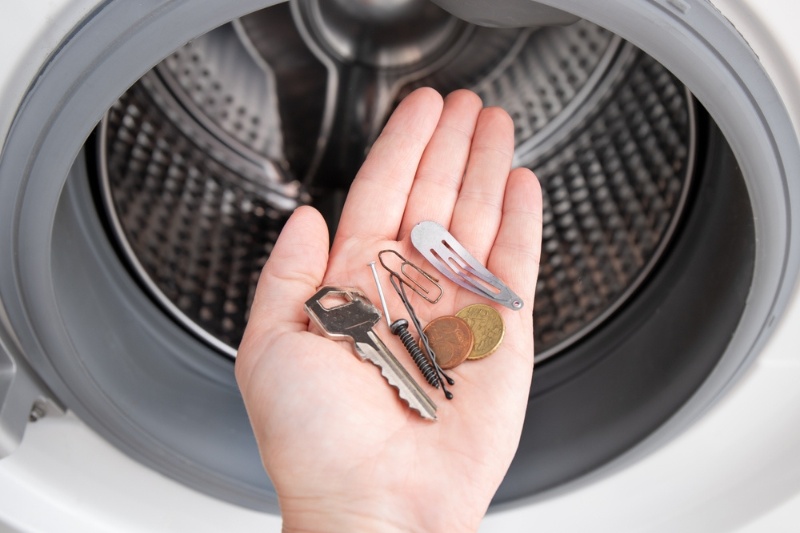
Sometimes, small items are accidentally left in clothing pockets and put in the wash. These can get stuck in the washing machine drum or between the drum and the outer tub.
If these items are made of rubber (such as elastic hair ties), they can generate a burning rubber smell.
Small items from your laundry loads can also get trapped in the machine and rub against heat-generating components.
Common examples include socks, pants, and gloves. As the machine spins, there is friction between the washing machine and these items, causing them to heat and emit a burning smell.
6. Clogged drain pump
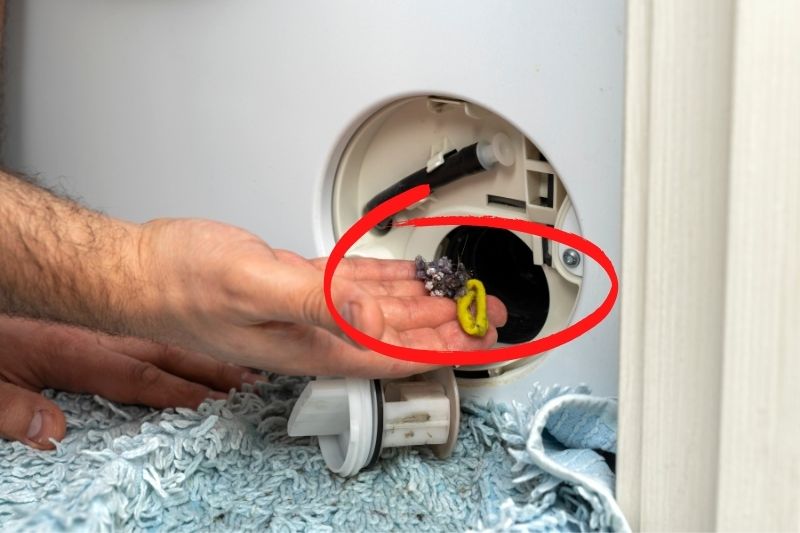
In a washing machine, the drain pump filter is responsible for removing debris, lint, and foreign objects from the water before it is pumped out of the appliance.
The residue it collects can eventually clog or completely block the filter, causing the pump motor to work harder than usual.
As the pump motor struggles to move water through a clogged filter, it can overheat due to the additional effort required.
Overheated motor components can emit a burning odour. You might also notice a damp smell due to the growth of mould and mildew on clogged filters.
7. Home electrical issues
The burning smell from your washing machine might not be coming from within the appliance at all—it could be caused by issues with your home electrics.
The cables and circuits supplying the washer might have loose or corroded electrical connections.
Incorrect wiring within the plug or the outlet can lead to overheating and the generation of a burning smell.
Alternatively, the plug itself might be worn or damaged and not make a proper connection to the outlet.
This can lead to increased resistance within the circuit and heat generation. As you run your washing machine, it causes a surge in power and a burning smell.
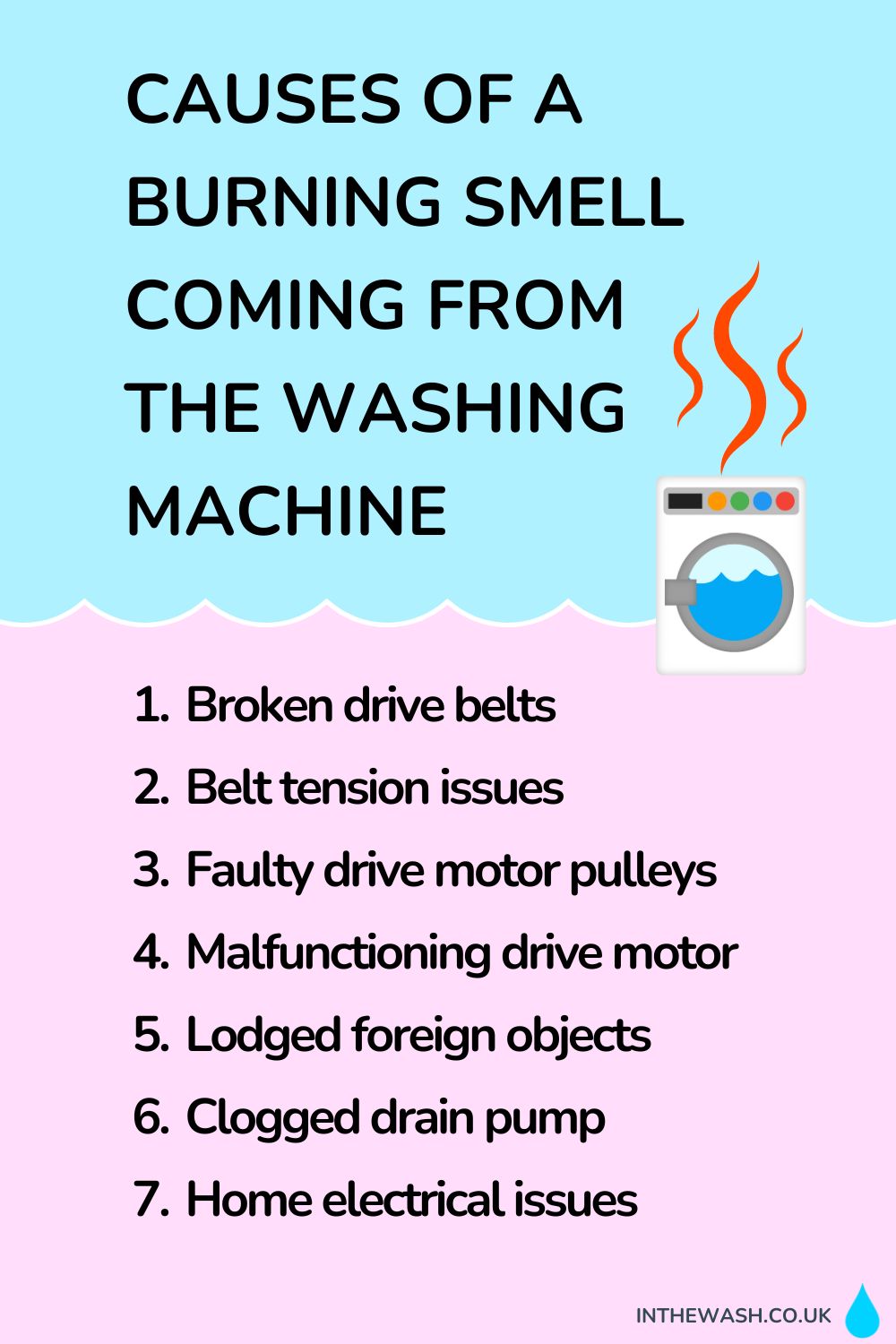
Can Overloading a Washing Machine Cause a Burning Smell?
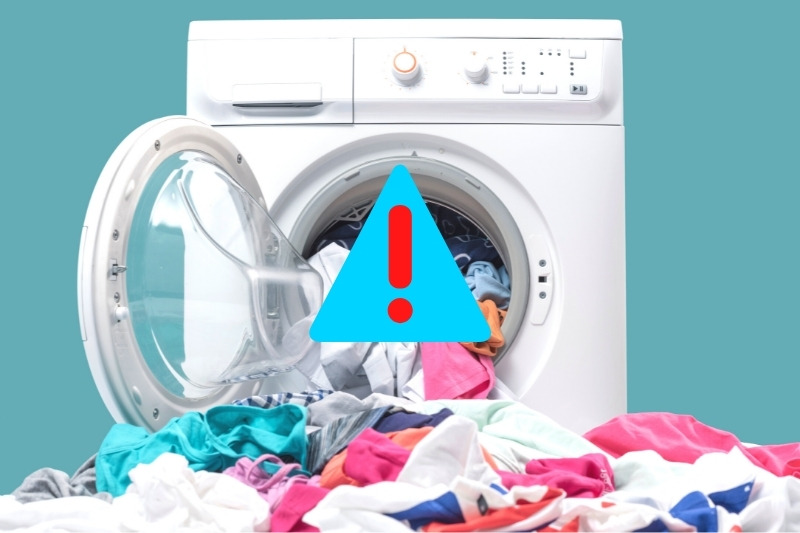
Overloading a washing machine can potentially cause a burning smell. Washing machines have a specific capacity that indicates the maximum amount of clothes they can handle in a single cycle. Overloading the machine with more clothes than its capacity can:
- Put excessive strain on the washing machine motor. The motor has to work harder to agitate and spin the heavy load, which can result in overheating. An overheated motor can emit a burning odour. It also causes it to wear out more quickly.
- Create extra friction between the clothes and the drum. Increased friction generates heat, and if this heat builds up excessively, it can lead to a burning smell. The larger the load, the more likely socks or other small items will get lodged underneath the seal.
- Cause drive mechanisms to wear out quickly or even break. Overloading puts extra stress on the drive belt and pulleys, generating a burning smell as the strained parts struggle to function correctly and rub together at rapid speeds.
As you can see, overloading not only affects the ability of your washing machine to clean clothes – it also leads to mechanical failures and potentially poses a safety hazard.
To avoid these issues and the associated burning smell, always adhere to the maximum load capacity for your machine. If unsure, refer to the instruction manual or check our guide to washer capacities.
What Should You Do If There’s a Burning Smell Coming from the Washing Machine?
If you’re experiencing a burning smell from your washing machine, addressing the issue promptly is essential to prevent further damage or potential safety hazards.
Here’s what you can do:
Step 1: Stop using the machine

If you notice a burning smell from your washing machine, stop the cycle immediately to prevent further damage.
Washing machines can set on fire, so turning off the appliance also removes the safety risk.
Unplug the washer from the electrical outlet, inspecting the plug and cables for signs of wear or overheating.
Step 2: Inspect the drum
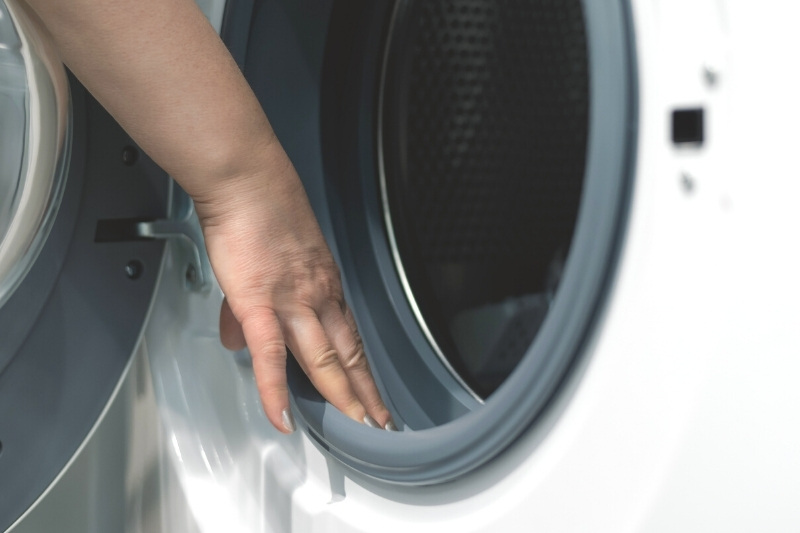
Check the drum for any foreign objects that might be causing the burning smell, carefully looking around the seal of the washing machine door. If you find any items, remove them with your fingers and place them in the bin.
Step 3: Check the drive belt
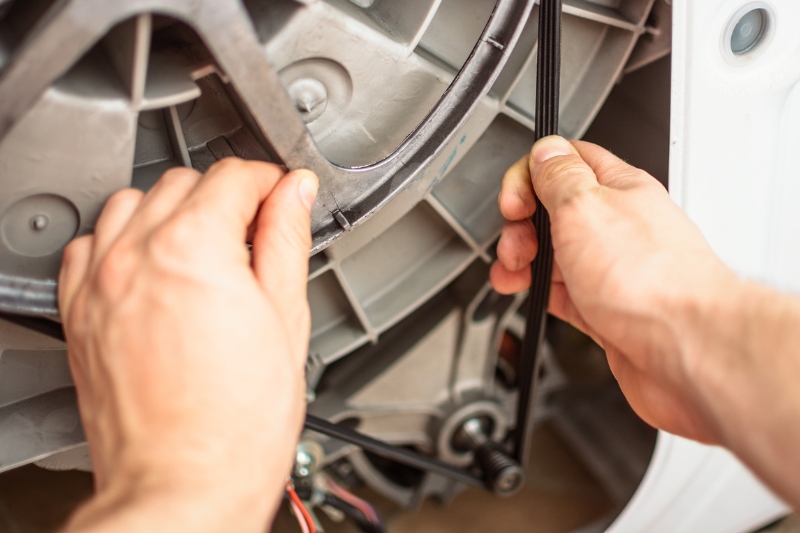
If your washing machine uses a drive mechanism, you can inspect the belt for signs of wear, misalignment, or damage.
The location of the drive belt might vary depending on your model. Usually, you’ll need to remove the back or front panel to access the belt but refer to the instruction manual if unsure.
You can then inspect the belt by following these steps:
- Check for damage: Visually examine the drive belt for any signs of wear, cracks, fraying, or damage. If you notice any of these issues, the belt might need to be replaced.
- Look for foreign objects: Check for any debris or foreign objects that might be stuck in the belt or pulley system. These can interfere with the operation and can be removed.
- Check the tension: Gently push down on the belt with your finger to check the tension. If the belt feels loose or sagging, it will need to be adjusted or replaced.
- Check alignment: The belt should be properly aligned on the drive pulleys. Make sure it’s not off-centre or slipping off the pulleys, and realign if needed.
- Observe movement: Manually rotate the drum by hand and observe its movement. It should move smoothly and evenly without any jerking or slipping.
Once you’ve inspected the belt and made any necessary adjustments, reassemble the washing machine panels or covers you removed to access the belt.
If you didn’t find any issues, move on to Step 4. If you corrected any damages, try running the machine to see if the burning smell persists.
Step 4: Check the drain pump filter
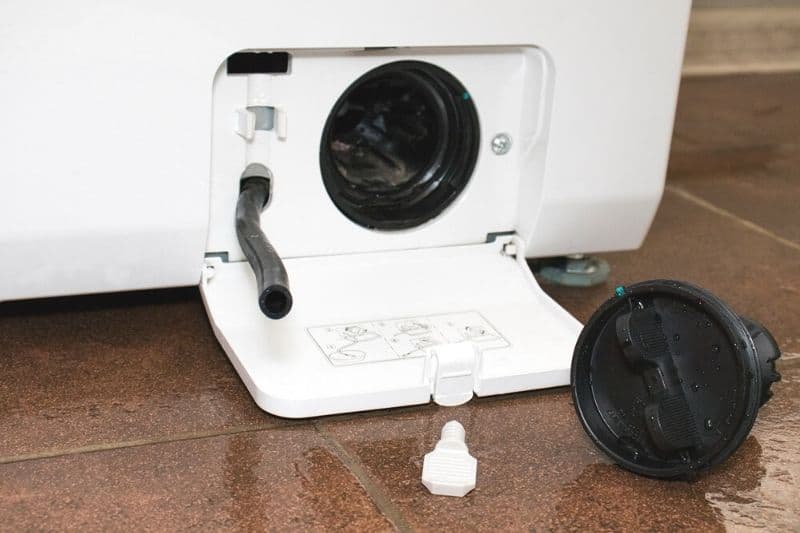
If you couldn’t find any issues with the drive belt, it’s worthwhile inspecting the drive pump filter. The location of the filter varies depending on the model of your washing machine, so consult the manual if necessary.
You’ll also want to grab a few supplies for this task, such as a shallow container, towels, and a torch. Then, follow these steps:
- Place a container: Place a shallow container or tray under the filter area to catch any water that might spill out when you remove the filter.
- Open the filter: Depending on the design, the filter might have a twist-off cap, a pull-out drawer, or a cover that needs to be removed. Carefully open the filter to access the interior.
- Inspect the filter: Look inside the filter for any debris, lint, or foreign objects that might have accumulated, using a torch for a better view. Pull any large blockages out with your fingers.
- Clean the filter: If the filter is removable, take it out and rinse it under running water to remove any trapped debris. Use a soft brush to remove stubborn residue and dirt.
- Inspect the pump housing: While the filter is removed, you can also inspect the inside of the pump housing for any obstructions and remove them.
- Reassemble: After inspecting and cleaning the filter and pump housing, carefully reassemble everything according to the manufacturer’s instructions.
Step 5: Contact a professional if necessary
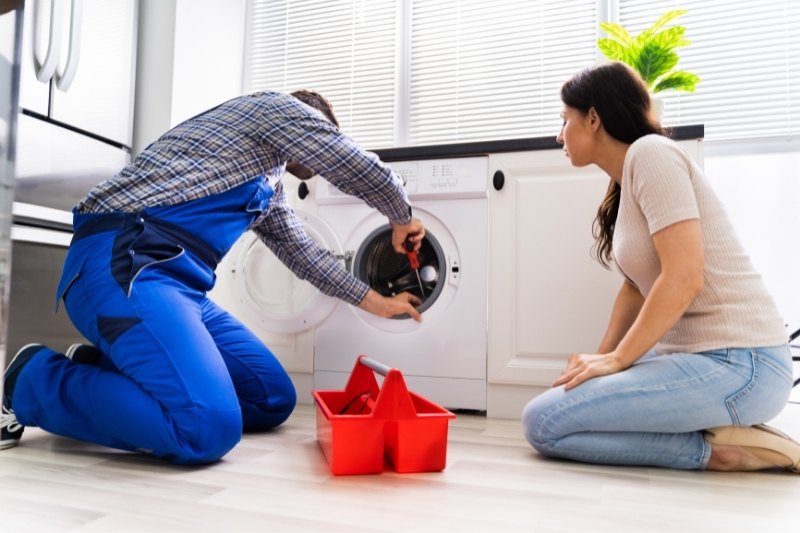
If the issue persists or you’re unsure about troubleshooting the problem yourself, it’s best to contact a professional appliance repair technician.
You might have issues with the machine wiring, motors, or pulleys that need replacing. Your repair technician can diagnose the problem accurately and perform any necessary repairs or replacements on your behalf.

Hannah has a passion for cleaning. She worked her way around Australia by cleaning hostels in exchange for free accommodation and used her cleaning skills to bag a job as a chalet host for a luxury ski company in France.
